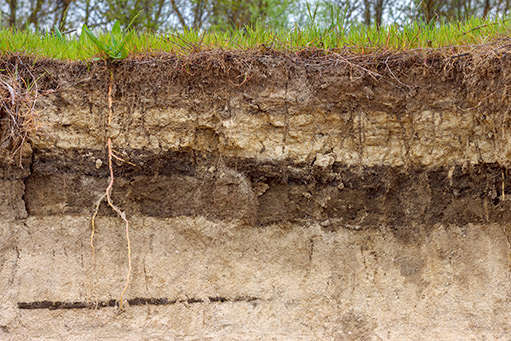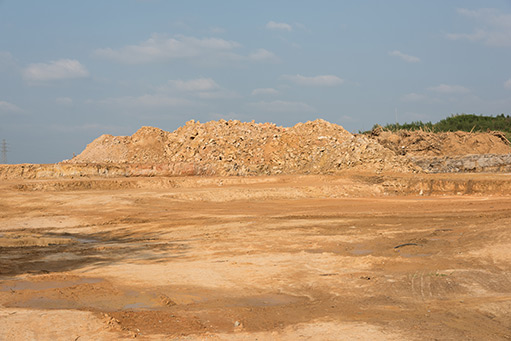Ensuring fill and disposed soil is fit for use
Soil Classification for Removal and Disposal
Our Environmental Services team can classify soil according to required regulations in the most cost effective way.
When soil (sometimes referred to as fill) is relocated across a site boundary it is immediately required by NSW EPA Waste Classification Guidelines 2014 to be classified. Solid waste (soil) can be classified in one of 3 ways; Virgin Excavated Natural Material (VENM), Excavated Natural Material (ENM), or General Solid Waste (non-putrescible).
* Non-putrescible means not being liable to decay and as a result become putrid, rotten, or odorous, such as in the case of organics, food waste, animal waste and sewage.
Virgin Excavated Natural Material (VENM)
Virgin Excavated Natural Material is defined as a natural material such as clay, gravel, sand, soil or rock fines, that has been excavated or quarried from areas not contaminated with chemicals or industrial process residue, nor contains any sulfuric soils or any other waste.
VENM is previously undisturbed soil, in its natural state and not mixed or contaminated in any way.
VENM is classified under The Protection of the Environment Operations Act 1997 (POEO Act).
What is the process by which Hunter Civilab assess and classify VENM?
If a previous site classification has been conducted, a soil profile will have already been generated and that can be used as a basis for determining if VENM may be suitable. If no prior works have been undertaken, an environmental scientist or geotechnical engineer will conduct an assessment in the field to determine is soils are undisturbed natural soils or emplaced fill soils.
Where an excavated material cannot be classified as VENM, it may be eligible for reuse under the excavated natural material order.

Excavated Natural Material (ENM)
When excavated material cannot be classified as VENM, qualified assessment can classify previously disturbed or minor contaminated soil as ENM.
Excavated Natural Material is classed as naturally occurring rock and soil that has:
- been excavated from the ground, and
- contains at least 98% (by weight) natural material, and
- does not meet the definition of Virgin Excavated Natural Material
Clause 93 of the Protection of the Environment Operations (Waste) Regulation 2014
What is the process by which Hunter Civilab assess and classify ENM?
ENM is assessed with reference to the NSW EPA Excavated Natural Materials Order (2014) which provides sampling density for in-situ assessment or stockpile assessment. In-Situ sampling has a higher sampling density than stockpile sampling.

Waste Classification
Not adhering to the classification of either VENM or ENM, solid waste if classified further into:
- General Solid Waste (non-putrescible)
- Restricted Solid Waste
- Hazardous Waste
What is the process by which Hunter Civilab assess and classify Waste?
Waste is classified in accordance with the NSW Waste Classification Guidelines (2014). Sampling density is determined with reference to the Industrial Waste Resource Guidelines (IWRG702) provided by EPA Victoria.
In addition to Soil Classification, Hunter Civilab also undertake Environmental Site Assessments including:
- Acid Sulfate Soil Assessments
- Hazmat Assessments
- Asbestos Assessments
- Groundwater Assessments

Importance of Soil Segregation During Civil Works
Soil segregation can prove a critical factor in reducing costs of soil removal/disposal.
Excavated soils of differing composition are often mixed during the civil works component. Early categorisation is key to reducing costs of soil export.
Clean soils are often mixed with soils containing waste, turning clean, reusable soil (VENM/ENM) into waste.
VENM & ENM can often be disposed of for little to no disposal cost, as they can be imported into any site that has DA approval for filling.
If material is not suitable for VENM/ENM, it must be waste classified in accordance with the NSW Waste Classification Guidelines 2014.
Acid sulfate soils can only be waste classified and disposed of as General Solid Waste following treatment as specified in Part 4 of the NSW Waste Classification Guidelines.
Partner with us on your next project
Contact our specialised team for more information about our services.